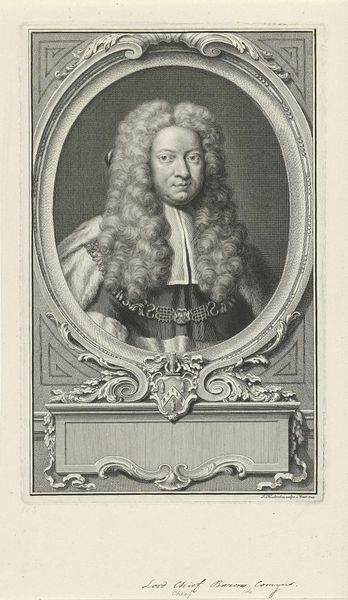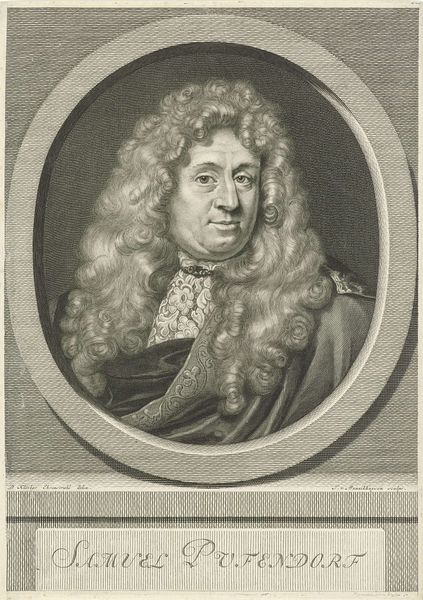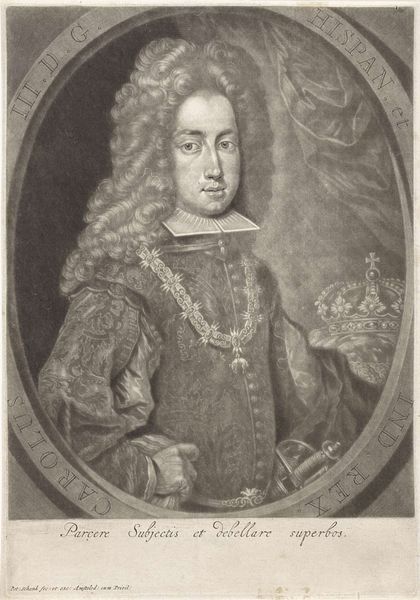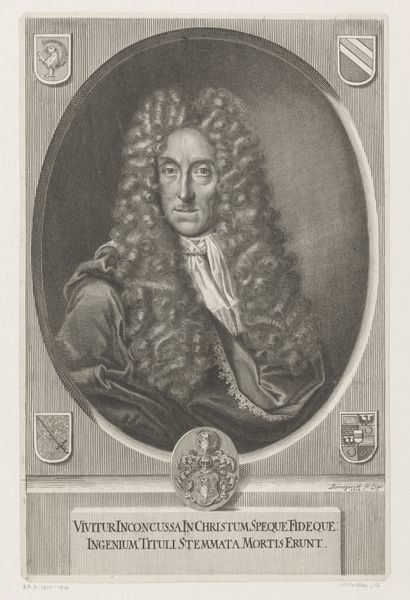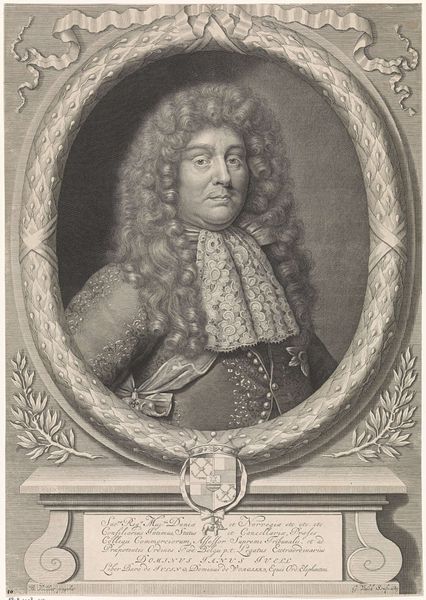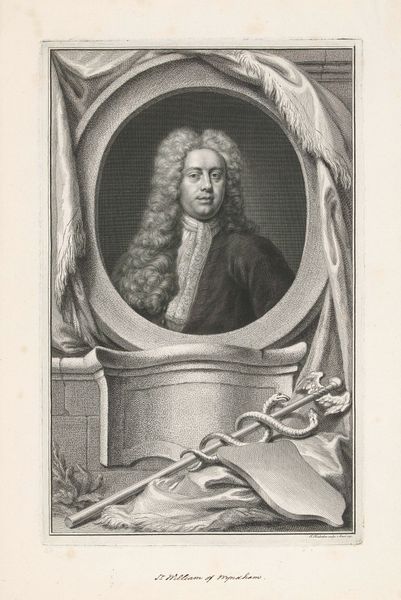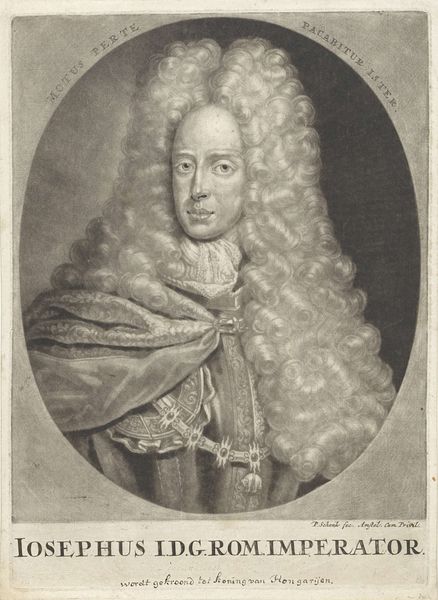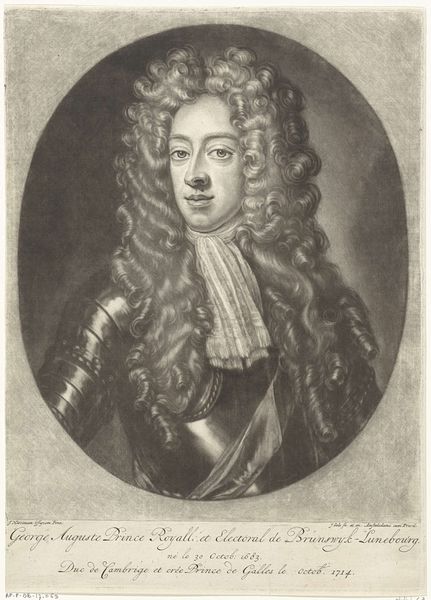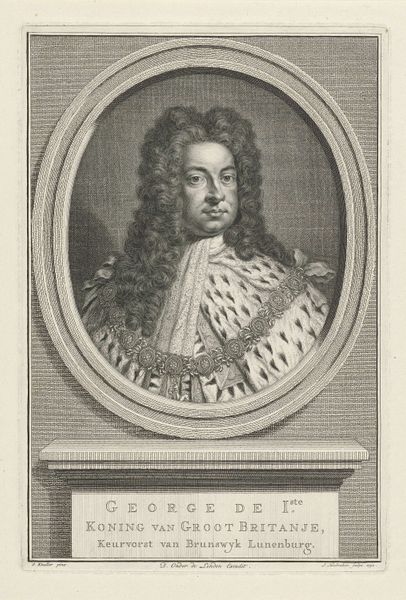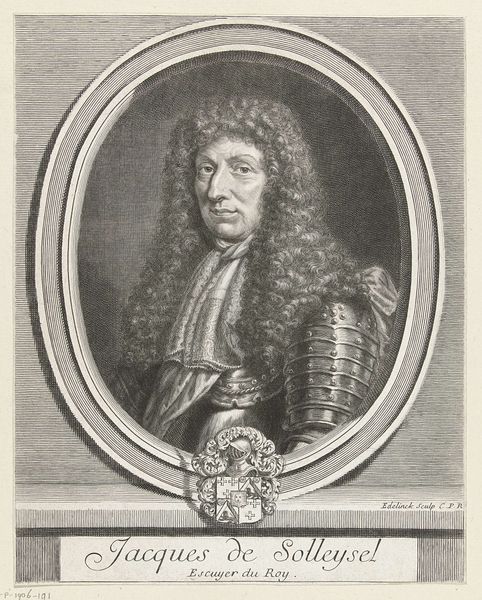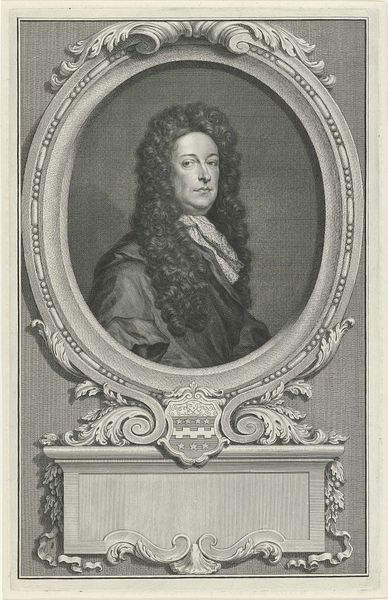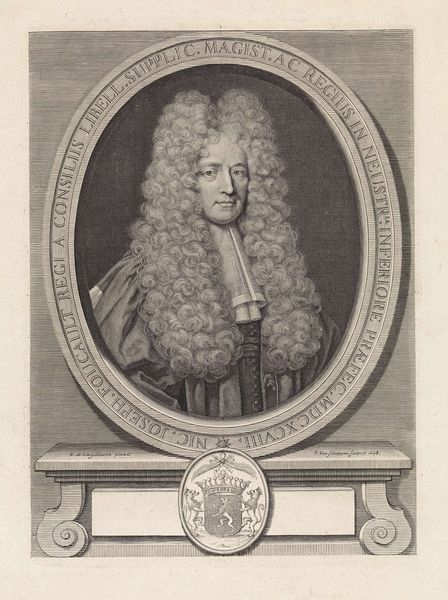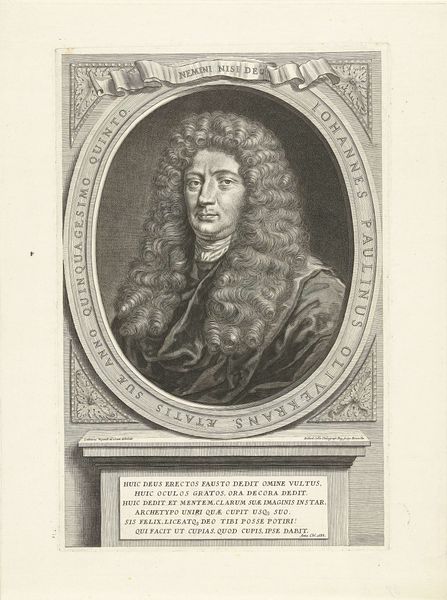
print, engraving
#
portrait
#
baroque
# print
#
old engraving style
#
historical photography
#
old-timey
#
history-painting
#
engraving
Dimensions: height 307 mm, width 204 mm
Copyright: Rijks Museum: Open Domain
This is Gérard Edelinck's portrait of Daniel Schrader, made in 1694. The print's arresting visual impact lies in its elaborate detail and symmetrical composition. Schrader’s face is framed by an enormous wig, a cloud of curls that command attention, while his garments suggest social status. The print engages with the semiotics of portraiture prevalent at the time. Edelinck uses line and form to communicate Schrader's identity and importance. The oval frame, adorned with foliage, contains the portrait, while below, an inscription and coat of arms add layers of meaning. These elements function as signs, reinforcing Schrader’s status and associating him with qualities of wisdom, leadership, and nobility. The print thus participates in constructing Schrader's public persona, reflecting the cultural values and codes of his era. Through its precise lines and structured composition, this portrait doesn't just capture a likeness; it encodes a set of cultural meanings that speak to ideas about identity, representation, and power. The image operates within a complex semiotic system, where visual elements converge to create a rich and nuanced representation of an individual and his place in society.
Comments
No comments
Be the first to comment and join the conversation on the ultimate creative platform.
